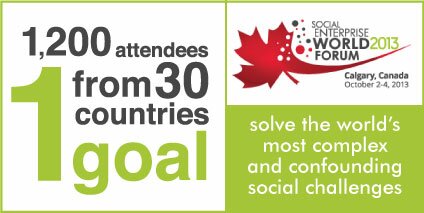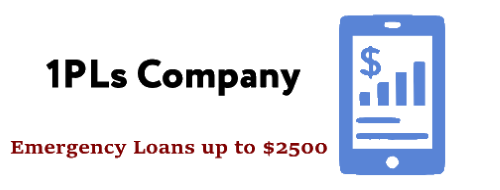How do you know the ‘good’ you’re doing?
This article is by SiMPACT Strategy Group.
Stephanie Robertson, President of SiMPACT Strategy Group, will be presenting at the SEWF 2013 session "Measuring and Demonstrating Impact."
The feature picture of this article is courtesy of Compfight / A Flickr Search Tool.
So you’ve been seeing ‘good’ happen in the social enterprise you contribute to. When you speak to the staff, clients and consumers, you hear all kinds of positive comments about what an amazing place this is. You see people coming and going, and you see them changing. But how do you know what is changing for them? How are you going to speak the language that both government and investors will understand? What is the Social Return on Investment (SROI)?
There is a growing need for effective outcome measurement as investors and social programs are yearning to understand what kind of difference they’re making in the community.
Impact investors, government departments, social enterprises and policy makers are all interested in how services improve the social, economic and environmental well-being of the community and what these changes are worth to those who use them, to the rest of the community and to their bottom line.
How do you know what is changing?
Understanding what is changing as a result of a social enterprise requires consultation with those who experience the change, so that there is clarity on both what is important to them and what they experience. The measurement of the outcomes and the social return on investment of a social enterprise helps to track and communicate the evidence of this change.
Once there is evidence to support the outcomes of the social enterprise, SROI takes the next step to determine the impact of the operation on individuals and society.
Truly understanding the impact demands that we ask the questions ‘what would have happened anyway?’ and ‘who else contributed to this change?’. This creates a realistic picture of the changes generated by the social enterprise.
What is the value of the change?
Applying a monetary value to social and environmental changes is a relatively new concept but has changed the conversation around the worth of delivering or investing in programs that create intangible value. Until recently, the perceived value of these changes has been markedly subjective, based on any one person’s or organization’s internal value. As a result, resources have not been used in the most effective ways, individuals who use the service are not getting what they need the most, and programs that target marginalized issues may be neglected despite the impact and value that they create.
Understanding the value of change created helps to create a paradigm shift, where the ‘good’ that comes from a social enterprise is seen as a tangible difference that affects the participant, the organization, funders and the community.
What are the challenges?
The movement toward understanding the value of social ‘good’ does not come without bumps in the road. Some investors are cautious to begin the process of outcome measurement and valuation due to the resources and expertise required and the perceived lack of standardized indicators, metrics, valuations and reporting. Related, is the inconsistent use of language; output, outcome, measurement, metrics, SROI and value are all words that are commonly mistaken for one another, creating confusion and diluted meaning. For example, in a recent survey of non-profit organizations completed by SiMPACT Strategy Group, 100% stated that they report on outcomes, but only 44% said that they use outcome metrics. In order for standardization to increase, there needs to be increased demand and use of SROI.
There is a strong call for social measurement and valuation, and this will require a process of use, testing, validation and collaboration in an open and public forum.
What are the benefits?
Outcome evaluation frameworks and applying a value using SROI is becoming progressively more important as social programs become more sophisticated in their service delivery and there is an increased need to understand and to communicate the impact of this work. Investors and government departments are using the tool to demonstrate accountability and transparency in their decision making. Social programs are using the results to identify where the most value is being created, and are able to re-design programming based on their goals, mandates and most importantly, client needs. Social sectors are provided with the evidence that supports the argument that they are preventing further harm, and are targeting the ‘root causes’ of issues. Of significance to both non-profit organizations and to investors, is the increased ability to market the program with the intent to diversify and increase potential and future funding sources.
Tell us more about what you think:
More about Stephanie Robertson and SiMPACT
 Stephanie Robertson founded SiMPACT Strategy Group in 2004 and launched LBG Canada in 2005. Her management and project experience is intertwined across the for-profit, non-profit and public sectors. Through her career, Stephanie has led many diverse initiatives, including the creation of Generation 2000, the development of the SROI Primer educational tool and the upcoming national launch of the SROI Canada Network.
Stephanie Robertson founded SiMPACT Strategy Group in 2004 and launched LBG Canada in 2005. Her management and project experience is intertwined across the for-profit, non-profit and public sectors. Through her career, Stephanie has led many diverse initiatives, including the creation of Generation 2000, the development of the SROI Primer educational tool and the upcoming national launch of the SROI Canada Network. As the first accredited SROI practitioner in North America, Stephanie is a leading professional in the area of social impact management and measurement. She is well known for her effectiveness as a teacher and as a powerful communicator on how to create value through investment in community and society.
 SiMPACT Strategy Group works with organizations to understand, value, maximize and communicate their social impact. We offer consulting, advisory and capacity building services to clients seeking to understand social impact as essential to strategic community investment, to maximizing the value of the Corporate Social Responsibility(CSR)/Sustainability agenda and those seeking a Social Return on Investment (SROI) analysis.
SiMPACT Strategy Group works with organizations to understand, value, maximize and communicate their social impact. We offer consulting, advisory and capacity building services to clients seeking to understand social impact as essential to strategic community investment, to maximizing the value of the Corporate Social Responsibility(CSR)/Sustainability agenda and those seeking a Social Return on Investment (SROI) analysis.
Tags: Measuring Impact, SiMPACT, Social Enterprise Skills Building






